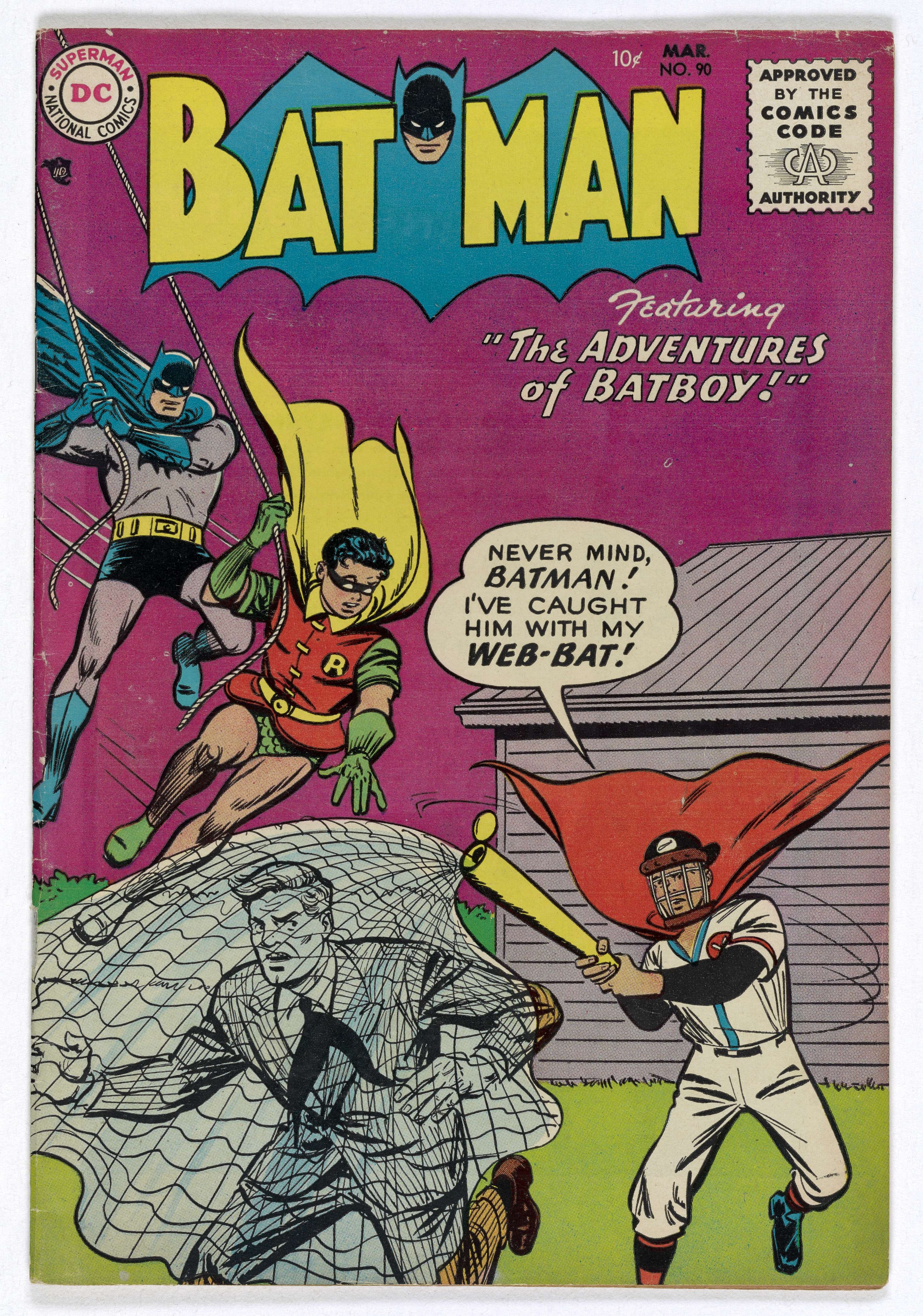Batman, No. 90
3/1955
Add to Favorites:
Add all page(s) of this document to activity:

On April 27, 1953, the Judiciary Committee of the United States Senate created a Special Subcommittee on Juvenile Delinquency to investigate the causes of juvenile delinquency and to propose measures in response. The subcommittee examined several factors influencing young people, but it drew the most attention when it investigated the allegation that comic books contributed to the rise in juvenile crime. The subcommittee looked at comics like this one as evidence.
The early 1950s were a time of great anxiety about the nation’s youth. In 1955, Newsweek magazine reported that the national crime rate had increased by 33.4 percent since 1940, largely due to increased criminal acts by teenagers. Comic books were a new form of media and among the first consumer products specifically marketed to teenage buyers. Civic and religious leaders linked comic book reading to antisocial and criminal behavior, and several major newspapers launched anti–comic book editorial campaigns.
During April and June, 1954, the Subcommittee on Juvenile Delinquency held televised public hearings in New York, the center of the comic book publishing industry. They were especially concerned about comic books’ vivid, detailed illustrations of violent acts. In the end, the subcommittee found that reading comic books did not cause teenagers to commit crimes. They ruled against censoring or banning comics and instead called on the comic book industry to regulate itself by adopting a ratings code and imposing a voluntary ban on depictions of extreme violence. The committee concluded that, ultimately, it was a parent’s role to screen material their children read.
The early 1950s were a time of great anxiety about the nation’s youth. In 1955, Newsweek magazine reported that the national crime rate had increased by 33.4 percent since 1940, largely due to increased criminal acts by teenagers. Comic books were a new form of media and among the first consumer products specifically marketed to teenage buyers. Civic and religious leaders linked comic book reading to antisocial and criminal behavior, and several major newspapers launched anti–comic book editorial campaigns.
During April and June, 1954, the Subcommittee on Juvenile Delinquency held televised public hearings in New York, the center of the comic book publishing industry. They were especially concerned about comic books’ vivid, detailed illustrations of violent acts. In the end, the subcommittee found that reading comic books did not cause teenagers to commit crimes. They ruled against censoring or banning comics and instead called on the comic book industry to regulate itself by adopting a ratings code and imposing a voluntary ban on depictions of extreme violence. The committee concluded that, ultimately, it was a parent’s role to screen material their children read.
This primary source comes from the Records of the U.S. Senate.
National Archives Identifier: 30460252
Full Citation: Batman, No. 90; 3/1955; Committee Papers, 1816 - 2011; Records of the U.S. Senate, Record Group 46; National Archives Building, Washington, DC. [Online Version, https://www.docsteach.org/documents/document/batman-no-90, April 27, 2024]Rights: In Copyright Learn more on our privacy and legal page.



